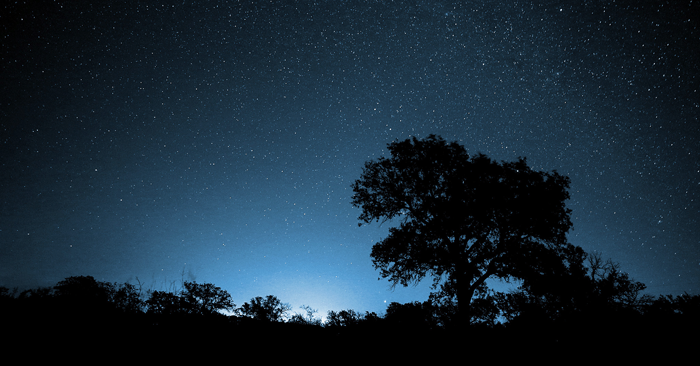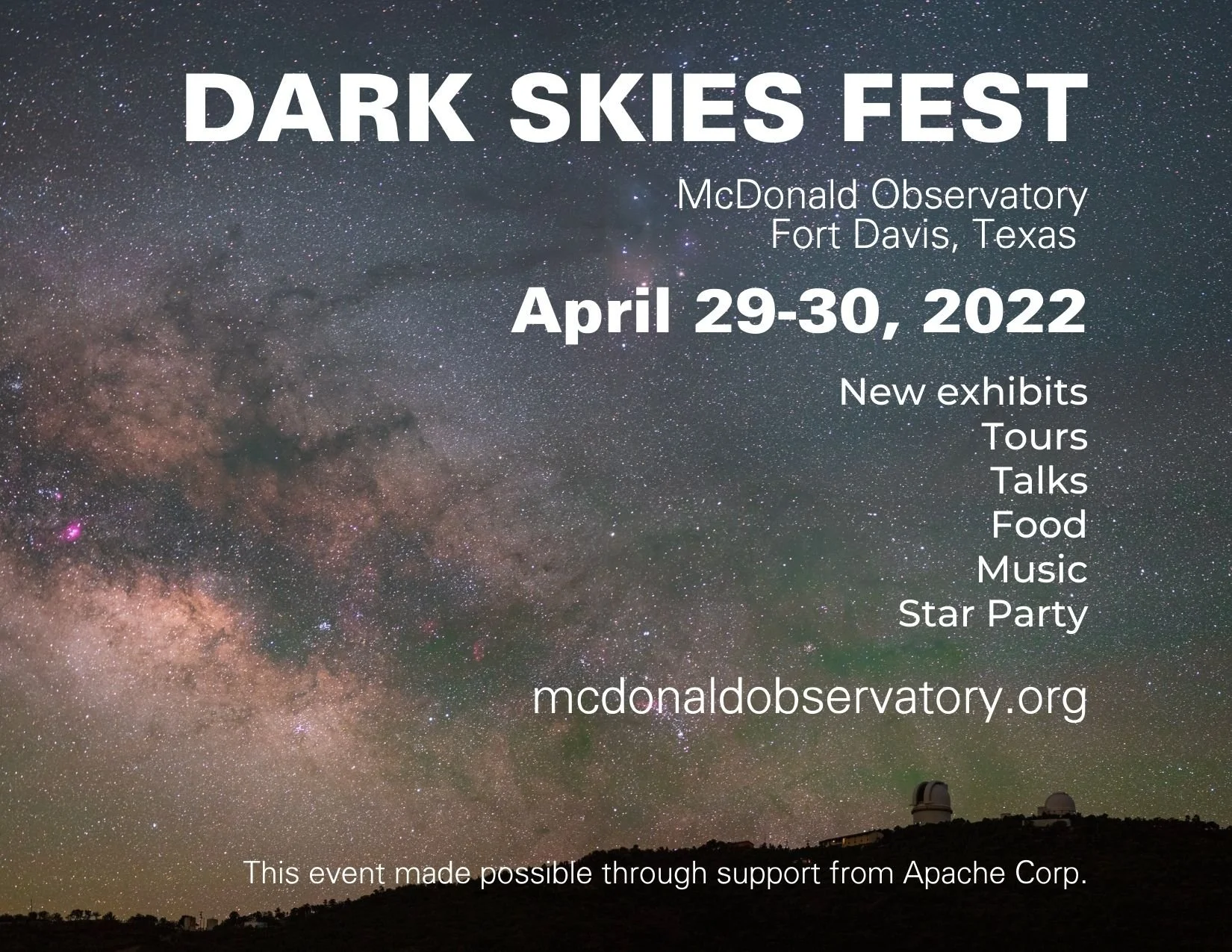DARK SKIES OVER DRIPPIN’
DRIPPING SPRINGS, TEXAS — When the sun is blazing, this town the locals call “Drippin’” is not much different than others in Texas Hill Country. You got your boot store and your grocery store, your DQ and your BBQ. And because Drippin’ is 30 minutes from ultra-hip Austin, you got your Texas chic — wineries, craft breweries, and Starbuck’s. But when dusk descends, Drippin’s main attraction becomes crystal clear.
Texas skies have been praised in song:
The stars at night are big and bright
Deep in the heart of Texas
The prairie sky is wide and high
Deep in the heart of Texas
These days, however, Texas is spreading like sagebrush. Five of the eleven largest American cities are now in the Lone Star state. The prairie sky is still wide and high but the stars are — whoa, what stars? That’s why Drippin’ dimmed the lights.
In 2011, Dripping Springs passed an outdoor lighting ordinance. Even by day you can see its effects. Street lights are few and funny looking. Instead of enormous glow bombs, the lights are what an old-time Texan might call “runty li’l thangs.” By day they look odd but by night, they work wonders.
Driving around Drippin’ after dark, I sense the difference. Oncoming headlights seem brighter. Cones of light frame houses and businesses. And then I come to the Home Depot on US 290. The whole parking lot is dimmed. Viewed from beneath, each light is as bright as usual but from a distance, I can barely see it. So the lights of Dripping Springs, instead of mimicking the sun, resemble the moon — cool, focused, softly glowing.
Locals don’t seem to notice, but the International Dark Sky Association did.
In 2014, Dripping Springs became Texas’ first — and America’s fourth — Dark Sky Community. The recognition led to pride, astro-tourism, and an annual Texas Night Sky Festival. Each spring, thousands gather here to celebrate what Shakespeare called “night’s candles.” Exhibits include mobile planetariums, telescopes, and speakers with some rather dark news — we are losing the night.
In 2001, The World Atlas of the Artificial Night Sky Brightness found the gauze of night on “a global scale.” Even at midnight, two-thirds of humanity can see just a handful of stars. “Mankind,” the report concluded, “is proceeding to envelop itself in a luminous fog.”
By night, our cities are candelabras, our suburbs lit like pinball games. Both are killing the night sky. Gas stations are so bright you can read while you pump. Homes are lit up like ships at sea. But not here in Drippin’.
Light meter in hand (a phone app), I check. One foot candle is the amount of light a single candle makes from a distance of a foot. At a floodlit Texaco station outside Drippin’, (above left) the light at the pumps measure twenty-three foot candles, the same as indoors at a local grocery store. But inside Dripping Springs city limits, the light at the pumps is just nine foot candles. (Above right.) Parking lots elsewhere might reach seven foot candles — here just one.
On the eastern horizon, you can still see light’s luminous fog — Austin. But look up and. . .
And there is Orion, not just the three-star belt, but the sword, the shield, the glory. And there the full Cassiopeia, the velvety Pleiades. And that cloudy gauze overhead? That’s the Milky Way.
Reducing outdoor lighting is not rocket science, just basic physics. Unlike sound, light doesn’t bend around corners. To reduce glare just recess the light so it doesn’t spew in all directions. That’s one requirement of Drippin’s lighting ordinance. Another limits foot candles per acre. Light, the ordnance notes, is an intruder — as invasive as a tumbleweed.
“Fundamentally, the ordinance is built around the legal notion of trespass,” the document reads. “If your light falls on someone else’s home or business or barn, that’s considered trespass under the Dripping Springs ordinance, and can lead to fines.”
But WHOA THEREt! This is Texas, dammit! Land of the free and home of the Pickup! Surely there has been “pushback.” Righteous rage! Shotguns fired in the air! Actually, no.
Like light itself, the fight for the Texas sky is spreading. Stripes, a chain of 565 gas stations, has pledged to reduce its outdoor lighting to ten foot candles. A new Texas Night Sky Coalition, including astronomers, planners, and environmentalists, is holding lighting seminars. And in 2018, the nearby towns of Wimberly and Woodcreek were also named Dark Sky Communities.
So dim the lights, Texas. Pour the craft beer, start the music. Sing “Deep in the Heart of Texas,” with Lone Star pride. The Hill Country’s Dark Sky movement may not end light pollution, but if it keeps spreading, it just might bring the Milky Way to a sky near you.



















